News Articles
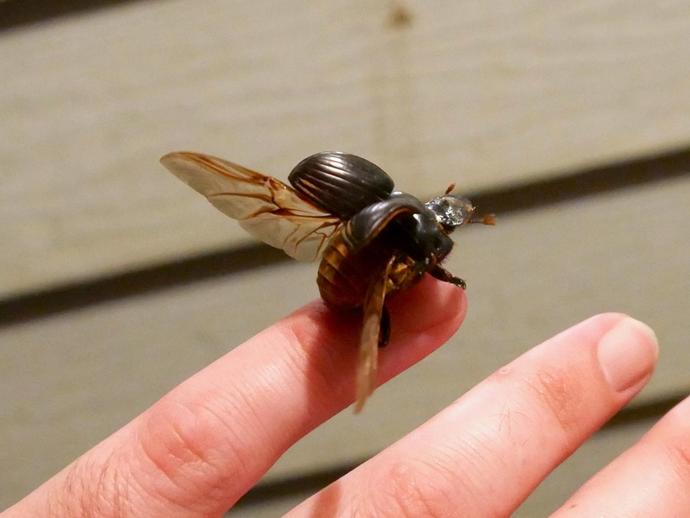
Sometimes I have to go out in search of critters to feature in these daily updates; at other ...
July 31, 2020
Sometimes I have to go out in search of critters to feature in these daily updates; at other times, the critters fly right into me with the force of an Airsoft pellet while I'm sitting on my back porch! This is Dichotomius carolinus, and it's the largest and heaviest dung beetle in the eastern US! When we think of dung beetles (and I guess some of us do more than others) we usually think of the large dung beetles of Africa that roll up little balls of dung and push them around. However, not all dung beetles are "rollers." Some are "tunnelers," like this lady here (you can tell it's a female because the males have a little horn on their heads). These beetles are usually found near horse and cow dung; they dig tunnels ...

**IMPORTANT** Due to greater than expected attendance and surpassing parking lot capacity ...
July 30, 2020
**IMPORTANT** Due to greater than expected attendance and surpassing parking lot capacity, the Drive-thru Dinosaur Experience is closed to additional visitors. We are extremely sorry for this inconvenience.
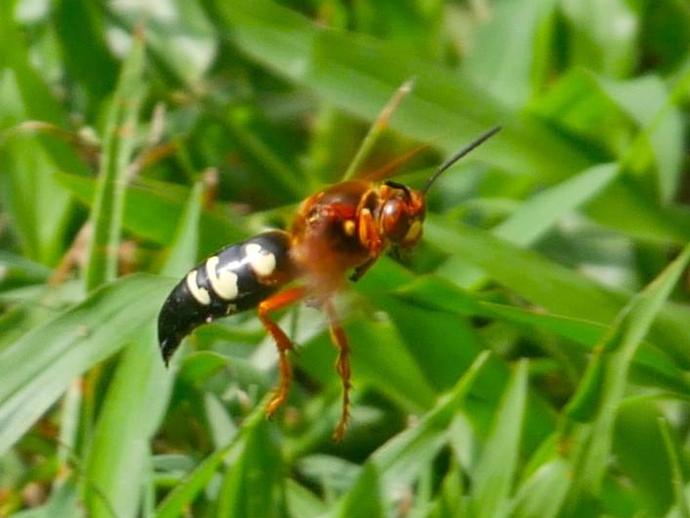
The eastern cicada killer (Sphecius speciosus) is one of our largest and most impressive wasps ...
July 30, 2020
The eastern cicada killer (Sphecius speciosus) is one of our largest and most impressive wasps -- especially if you happen to catch one doing what it does best. These solitary digger wasps can measure up to two inches long, with the females slightly larger than the males. The females need every bit of that size because they need the strength that comes with it. The adult wasps emerge in late June/early July and the females can often be spotted hovering over lawns looking for places to dig burrows. Their burrows are quite distinctive as the loose soil they push from the burrow forms a little mound with a trench leading to the entrance. Once the burrow is dug, the female flies off in search of a cicada (they prey on ...
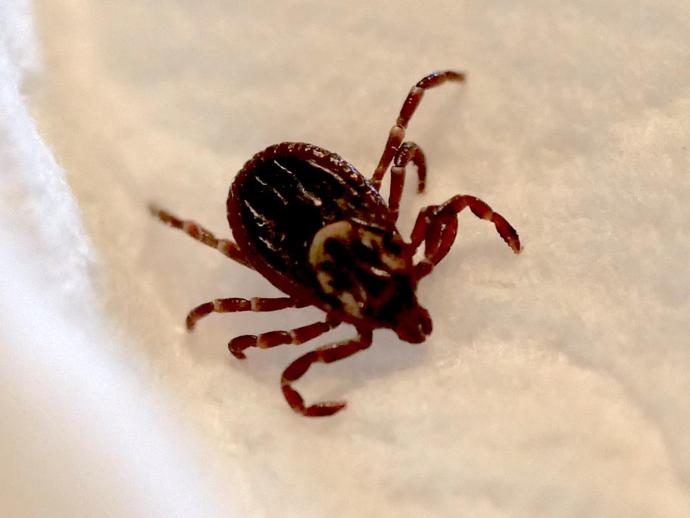
Today marks my 135th nature update ...
July 29, 2020
Today marks my 135th nature update, and I'm guessing that out of all the critters we've looked at, this one would rank #135 in terms of popularity. Dermacentor variabilis, better known as the American dog tick or wood tick, can spread a number of diseases, including Rocky Mountain spotted fever and tularemia (although it's not generally a vector for Lyme disease; the smaller deer ticks are mostly responsible for that one). However, if you'd like to learn the best way to stay safe from ticks of all types, read on! Dog ticks can be found throughout the eastern and midwestern U.S. In Virginia, the peak tick season is May through July, although they can be found all the way into the fall. Ticks must feed on blood during every ...
Ever wonder why some bugs have wings, while others do not? Well, our experts have the answer!
July 29, 2020
Ever wonder why some bugs have wings, while others do not? Well, our experts have the answer! In this latest episode of "Ask an Expert", curious youngster, Julie, asks "How do some bugs get wings?" and VMNH Associate Curator of Invertebrate Zoology Dr. Kal Ivanov answers! Have a question of your own you'd like to ask? The museum offers an exciting opportunity for you to ask your most burning natural history questions and have them answered by an expert! All you have to do is record a video of you or your child - or really anyone - asking a natural history question and submit it to us via Facebook Messenger. The question could be about dinosaurs, mammals, insects, archaeology, geology - or anything related to natural ...
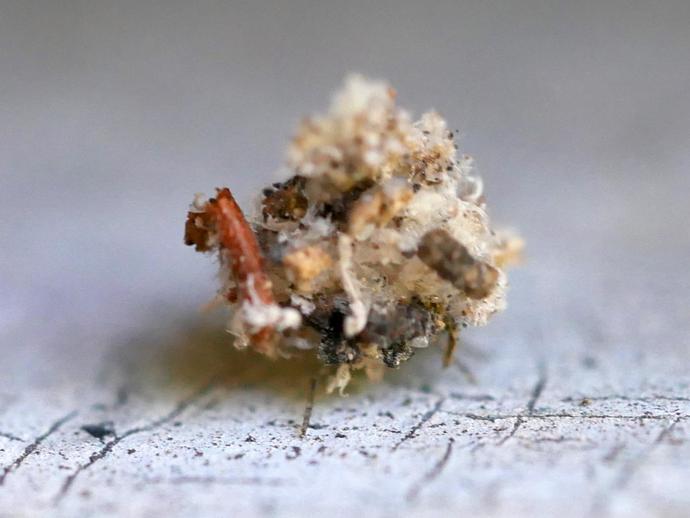
"Gee Ben ...
July 28, 2020
"Gee Ben," you are perhaps thinking to yourself, "that's a real nice picture of a little piece of filth. Thanks for sharing this marvel of nature with us today." And sure, at first glance, this does look like a little pile of trash ... but that's exactly what the junk bug wants you to think! If you look closely, you can see a couple of little legs poking out from underneath this pile. This is the larvae of the green lacewing, which belongs to the family Chrysopidae! Green lacewings are fairly common; they're small flying insects with green bodies and pale green diaphanous wings. Their larvae are not quite as attractive, however. Green lacewing larvae are predators of tiny insects, especially aphids. When a lacewing ...

SUMMER DISCOVERY KITS NOW AVAILABLE!
July 27, 2020
SUMMER DISCOVERY KITS NOW AVAILABLE! Even though VMNH is currently unable to host education programs at the museum this summer, we are still able to bring VMNH education programs to you! The museum's education team has created 5 separate Summer Discovery Kits that explore a variety of topics, from paleontology to food webs to life cycles! Visit www.vmnh.net/education-kits to learn more!
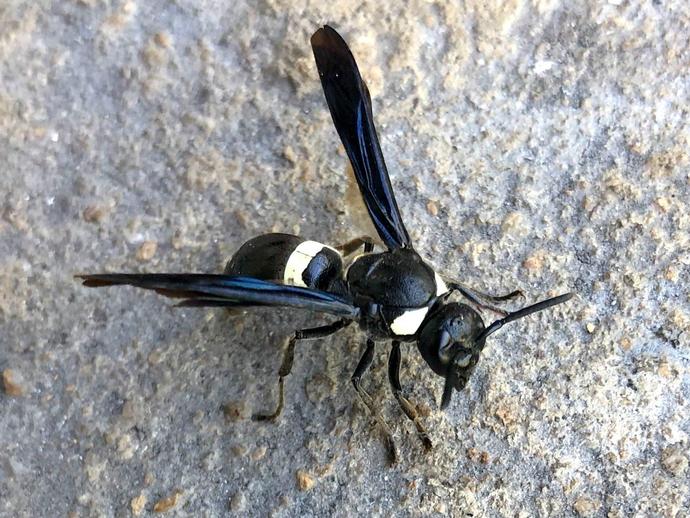
At first glance ...
July 27, 2020
At first glance, you might think this is the dreaded bald-faced hornet (Dolichovespula maculata), a type of wasp known for being highly aggressive. As someone who once tried to knock down a bald-faced hornet nest that was not as abandoned as it appeared and then broke into a sprint that would have impressed Usain Bolt, I can attest to the terror of the bald-faced hornet. However, this is actually Monobia quadridens, also known as the four-toothed mason wasp, and it's a great ally to have around your home! The easiest way to tell the difference is that bald-faced hornets have white on their faces/heads (hence the name), while four-toothed mason wasps do not. Another big difference is that bald-faced hornets are social, ...
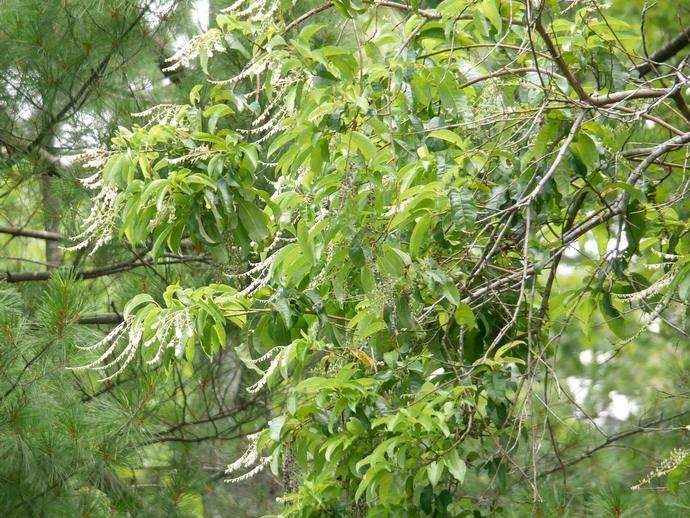
Oxydendrum arboreum, better known as the sourwood or sorrel tree, is the only species in its genus
July 26, 2020
Oxydendrum arboreum, better known as the sourwood or sorrel tree, is the only species in its genus. It's native to eastern North America and is particularly common in the lower section of the Appalachians. Of course, if you're a fan of honey, you're probably very familiar with the sourwood tree. When bees collect pollen and nectar from the blooms of the sourwood, they produce sourwood honey, which is widely regarded as one of the finest varieties of honey you can find. Sourwood trees get their name from the acrid flavor of the leaves, although some people chew them to alleviate dry mouth. The leaves are also famous for turning a beautiful crimson color in the fall. Sourwoods generally don't grow very tall, usually ...
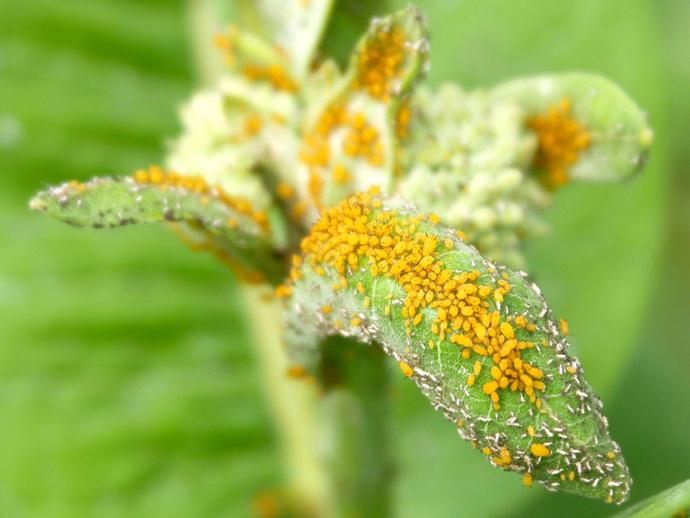
If you have any milkweed growing near you ...
July 25, 2020
If you have any milkweed growing near you, you've probably spotted a whole bunch of these small yellow insects covering the new leaves at the top of the plant. This is Aphis nerii, commonly called the milkweed aphid or the oleander aphid. It's believed that this aphid probably originated in the Mediterranean where it fed on oleander, which is its main host plant. However, it has since become widespread in tropical and warm temperate regions around the world. Perhaps the most remarkable fact about these aphids is that males have never been observed in the wild! How is that possible? These aphids are viviparous and parthenogenetic. "Viviparous" means that rather than laying eggs, these aphids give birth to live young, ...
In this episode of "Museum Minute" ...
July 24, 2020
In this episode of "Museum Minute", VMNH Educator Kayla Lacy provides a handful of interesting tidbits about the museum's resident Allosaurus, which can be found inside the Harvest Foundation Hall of Ancient Life! "Museum Minute" is a new video series produced by VMNH education staff that highlights specimens and displays that reside inside the museum's exhibit galleries!
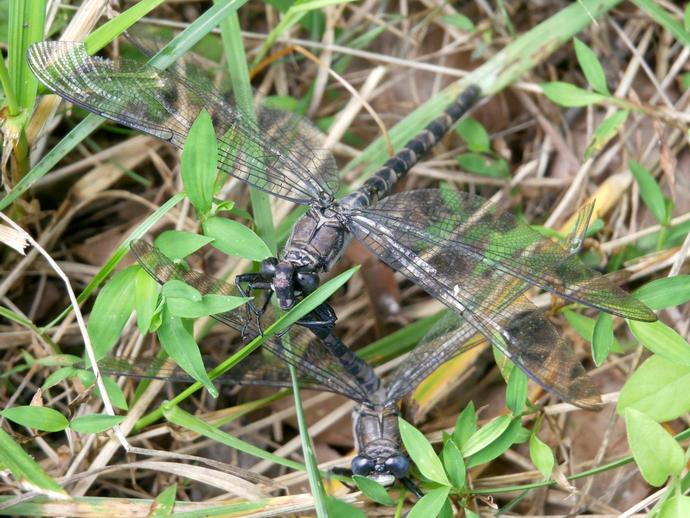
Now here's something you don't see everyday: two dragonflies preparing to mate!
July 24, 2020
Now here's something you don't see everyday: two dragonflies preparing to mate! Before a weirdo with a camera interrupted their intimate moment, anyway. These are gray petaltail dragonflies (Tachopteryx thoreyi). This species was featured in my July 8 nature update; interestingly, they're considered fairly uncommon in Virginia, but I keep finding them at my place. So how do dragonflies mate? It's definitely not the easiest thing in the world. When the male spots an appropriate female, it uses special clasping structures at the end of its abdomen to grab the female by the prothorax (the dragonfly equivalent of the neck). If the female is receptive, she'll bend her abdomen forward and connect it to the underside of the ...

**POSTPONED** The Drive-thru Dinosaur Experience! has been POSTPONED due to severe thunderstorms
July 23, 2020
**POSTPONED** The Drive-thru Dinosaur Experience! has been POSTPONED due to severe thunderstorms. We will plan to host this event on Thursday, July 30 from 5 to 8 p.m.
In honor of the Drive-thru Dinosaur Experience!, Assistant Curator of Paleontology Dr
July 23, 2020
In honor of the Drive-thru Dinosaur Experience!, Assistant Curator of Paleontology Dr. Adam Prithcard uses this week's episode of "Tales of Ancient Life" to focus on the most famous dinosaur of all: Tyrannosaurus rex! This episode also marks the "Tales of Ancient Life" debut of Paleontology Technician Lucy Treado, who highlights another member of the tyrannosaur family, Appalachiosaurus!
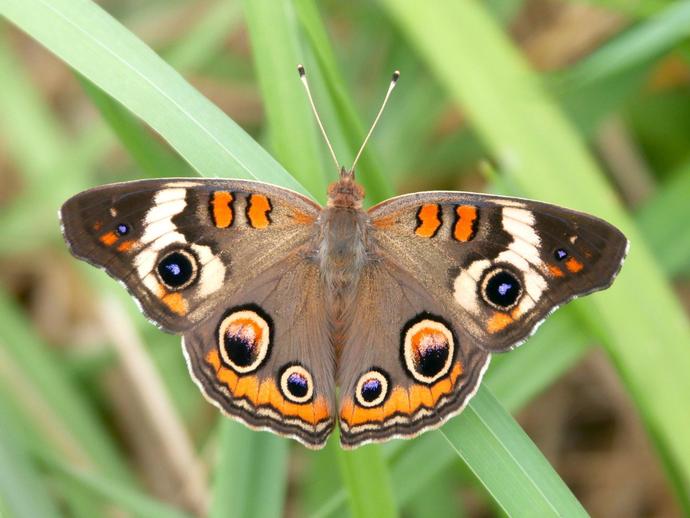
The common buckeye (Junonia coenia) is one of the most common butterflies in the southern U
July 23, 2020
The common buckeye (Junonia coenia) is one of the most common butterflies in the southern U.S., and it can be found year-round in the southernmost parts of its range, including Mexico and parts of Central America. These small, beautiful butterflies are fairly easy to spot because their life cycle is connected to common prairie plants that thrive in areas disturbed by humans. If you find an open, sunny area with low vegetation, you've found a prime spot for common buckeyes! Interestingly, the caterpillars of these butterflies have to perform a balancing act when it comes to their diets. The caterpillars prefer to feed on plants that contain compounds called iridoid glycosides; these compounds make the caterpillars taste ...
In honor of tomorrow's Drive-thru Dinosaur Experience!, Dr
July 22, 2020
In honor of tomorrow's Drive-thru Dinosaur Experience!, Dr. Dana Ehret, assistant curator of natural history at the New Jersey State Museum, discusses another famous New Jersey dinosaur, Hadrosaurus!
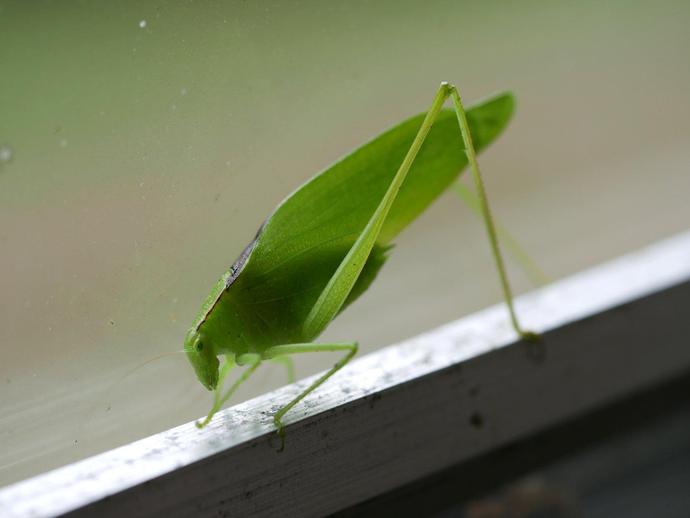
You may not always see katydids, but on summer evenings, you'll definitely hear them!
July 22, 2020
You may not always see katydids, but on summer evenings, you'll definitely hear them! This particular katydid is a male Amblycorypha oblongifolia, also known as the oblong-winged katydid. It can be found from the northeastern U.S. into the midwest. They typically hang out in the understory of deciduous forests and in tall weeds and shrubs, and they feed on goldenrod flowers and other related plants. They don't usually damage important agricultural crops. Since katydids are nocturnal, they rest during the day. When they do, they usually assume a position just like this one, with their head lowered and their abdomen raised. Katydids are leaf mimics, and this posture helps to create the illusion that they're nothing more ...
In honor of tomorrow's Drive-thru Dinosaur Experience!, Dr
July 22, 2020
In honor of tomorrow's Drive-thru Dinosaur Experience!, Dr. Dana Ehret, assistant curator of natural history at the New Jersey State Museum, discusses one of New Jersey's most famous dinosaurs, Dryptosaurus!
In honor of this Thursday's Drive-thru Dinosaur Experience!, Dr
July 21, 2020
In honor of this Thursday's Drive-thru Dinosaur Experience!, Dr. Brooke Haiar, of the University of Lynchburg, discusses some of her recent dinosaur dig collaborations with the museum!
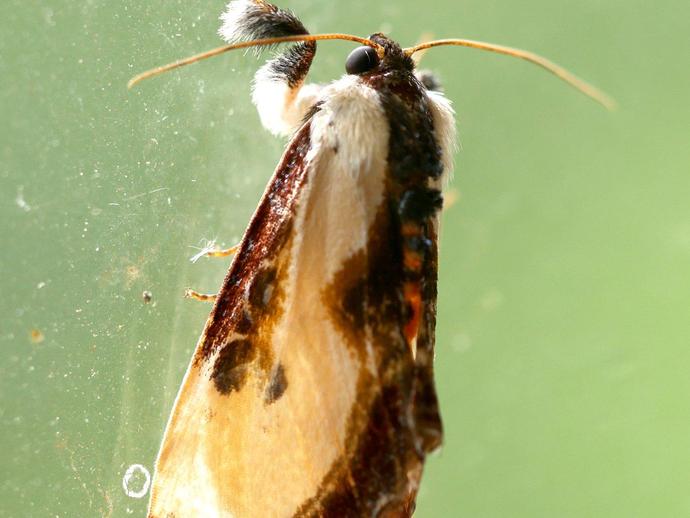
I realize I post a lot of moths ...
July 21, 2020
I realize I post a lot of moths, but this is because I love moths and find them endlessly fascinating. Case in point: Eudryas grata, the "beautiful wood nymph" moth. Perhaps the most interesting thing about this moth is that it's a mimic. Believe it or not, Eudryas grata has evolved to resemble bird poop! It might not be the most appealing fashion choice, but if you're a tasty snack, it's handy to look like something that not many critters would ever want to eat. These unique moths can be found across much of the eastern U.S., and the caterpillars feed on the foliage of a variety of plants, including buttonbush, hops, grapes, and Virginia creeper. As with many moths, the adults do not eat. The next time you step ...
In honor of this Thursday's Drive-thru Dinosaur Experience!, Dr
July 20, 2020
In honor of this Thursday's Drive-thru Dinosaur Experience!, Dr. Alex Hastings, Fitzpatrick Chair of Paleontology at the Science Museum of Minnesota and former VMNH Assistant Curator of Paleontology, sent us this super-fun presentation, focusing on one of the most iconic dinosaurs of all time: Tyrannosaurus rex! Additionally, Dr. Hastings discusses his current and past research of ancient reptiles, including the infamous Titanoboa!
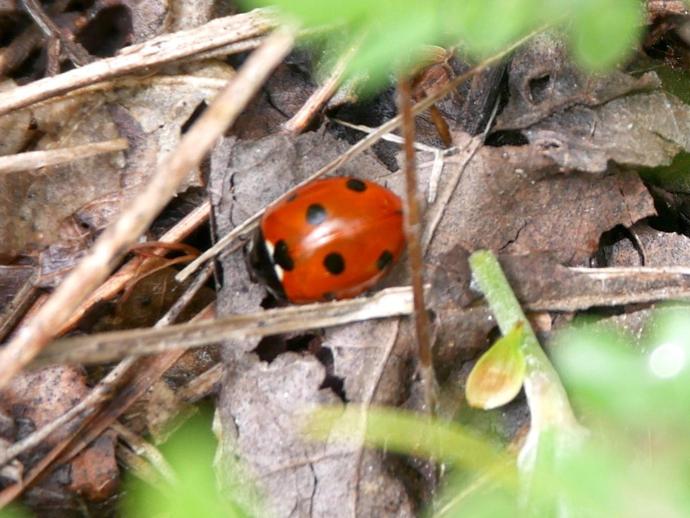
Coccinella septempunctata ...
July 20, 2020
Coccinella septempunctata, the seven-spotted ladybug, is Europe's most common ladybug, but you might be able to find it in your own backyard here in southwest Virginia. These ladybugs were intentionally introduced into North America multiple times between 1956 and 1971 to serve as a biological control of aphids. All of those attempts apparently failed. However, in 1973, a population of seven-spotted ladybugs was discovered in New Jersey. These ladybugs had apparently been accidentally introduced instead of intentionally introduced, and for whatever reason, they finally took hold. They can now be found throughout North America! Of course, invasive species are never a good thing, even if they do eat aphids in your garden. ...
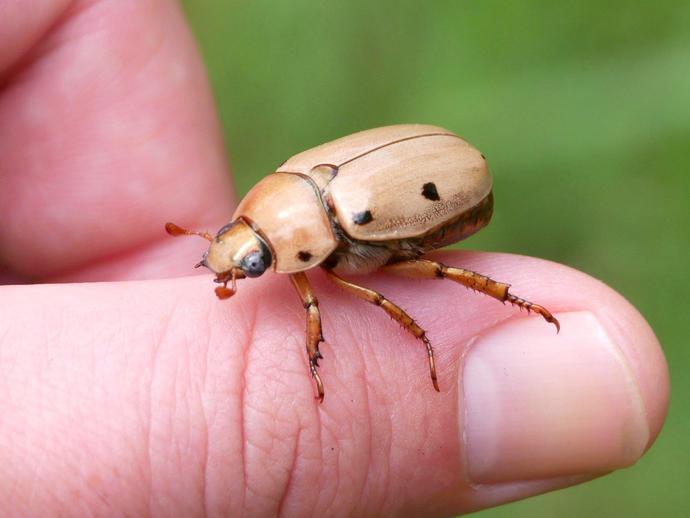
The grapevine beetle (Pelidnota punctata) is common throughout the central ...
July 19, 2020
The grapevine beetle (Pelidnota punctata) is common throughout the central, northern, and eastern U.S., and depending on where you find a grapevine beetle, you might notice some variation! The more southerly grapevine beetles have light brown legs like this one, while grapevine beetles from the north have dark legs. These beetles spend their larval period feeding on decaying logs and stumps. They emerge as adults around July. As the name suggests, these beetles like to feed on both the fruit and the leaves of grapevines, and they aren't picky; they'll eat both wild and cultivated species of grapevine. Fortunately, however, they're not considered major pests, so don't worry too much about your vineyard. If you'd like to ...
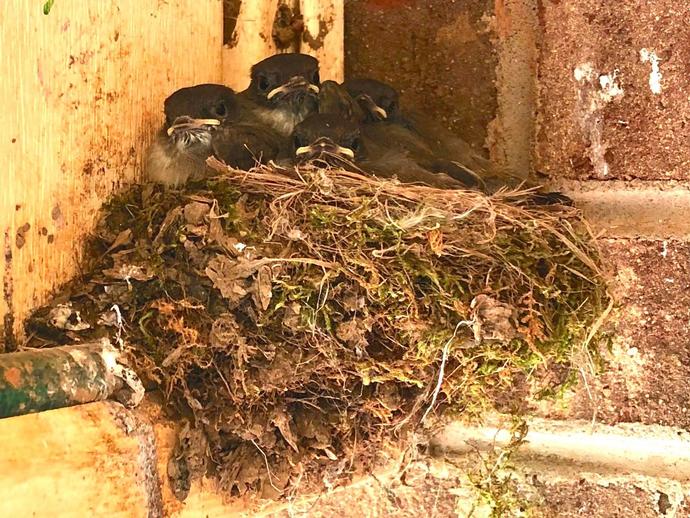
Please enjoy this nest of fledgling eastern phoebes (Sayornis phoebe) as they stare at my camera ...
July 18, 2020
Please enjoy this nest of fledgling eastern phoebes (Sayornis phoebe) as they stare at my camera in confusion! Phoebe nests are fairly distinctive, as they have a mud base and are lined with moss and grass. They're usually built in crevices, whether on a rock or on a man-made structure (like my grandma's front porch). Phoebes are migratory birds, spending the winters in the southern U.S. and even down to Central America! They're one of the first birds to return to their breeding grounds in the spring and one of the last to leave in the fall. During their breeding season, they can be found throughout the eastern and midwestern U.S. and up through much of western Canada. These insect-eating birds are members of the ...

It might not look like much now ...
July 17, 2020
It might not look like much now, but this fish tank will soon be part of a major addition to the museum's "Wild Watersheds" exhibit located between the Harvest Foundation Hall of Ancient Life and Uncovering Virginia exhibits! Stay tuned for updates!
Welcome to "Museum Minute" ...
July 17, 2020
Welcome to "Museum Minute", a new video series produced by VMNH education staff that highlights specimens and displays that reside inside the museum's exhibit galleries! In this video, VMNH Educator Terri Robertson provides a handful of interesting tidbits about a mastodon cast skull that can be found inside the museum's Harvest Foundation Hall of Ancient Life!
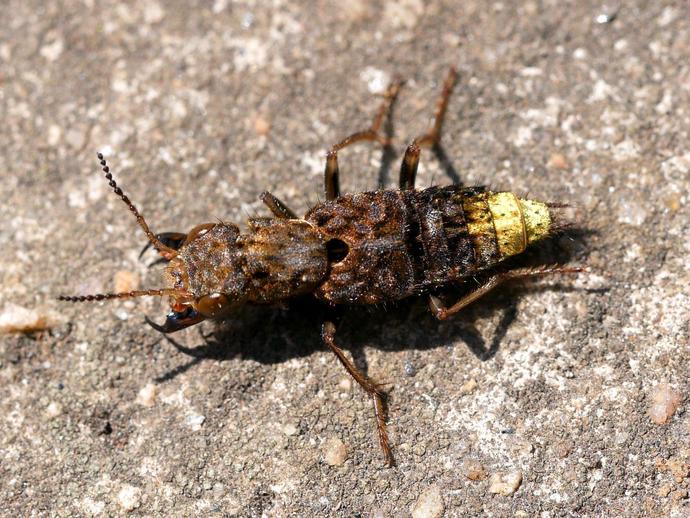
Now here's something you don't see every day -- and in fact ...
July 17, 2020
Now here's something you don't see every day -- and in fact, I don't recall ever seeing one before I found this one. This is Ontholestes cingulatus, the gold and brown rove beetle! Rove beetles belong to the family Staphylinidae, which contains about 63,000 species across thousands of genera! It's an ancient family of beetles and may well be the single largest family of organisms still in existence! The easiest way to spot a rove beetle is by its elytra, which are the hard shells that cover a beetle's flight wings. The elytra on rove beetles are very short, usually covering less than half of the beetle's abdomen. This particular rove beetle belongs to the genus Ontholestes, which has about 30 described species. Only ...
In this episode of "Tales of Ancient Life", Assistant Curator of Paleontology Dr
July 17, 2020
In this episode of "Tales of Ancient Life", Assistant Curator of Paleontology Dr. Adam Pritchard discusses the timing of major events in the history of dinosaurs across the past 252 million years!
Ever wonder how many legs centipedes and millipedes really have?
July 17, 2020
Ever wonder how many legs centipedes and millipedes really have? The answer might not be what you expect! Check-out this video submitted by curious youngster, Paul, and answered by Dr. Jackson Means, VMNH research technician and resident millipede expert! The museum is offering an exciting new opportunity for you to ask your most burning natural history questions and have them answered by an expert! All you have to do is record a video of you or your child - or really anyone - asking a natural history question and submit it to us via Facebook Messenger. The question could be about dinosaurs, mammals, insects, archaeology, geology - or anything related to natural history - and we'll have an expert respond! *Please note ...
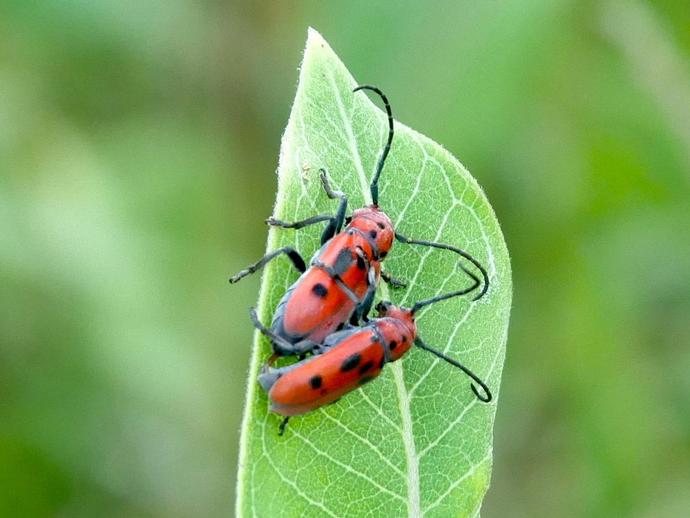
Yesterday we looked at common milkweed (Asclepias syriaca)
July 16, 2020
Yesterday we looked at common milkweed (Asclepias syriaca). Today, let's look at a critter that you're likely to find living on milkweed: Tetraopes tetrophthalmus, the red milkweed beetle! Both the genus name and species name of this beetle mean "four eyes," which comes from an unusual feature of this beetle: their antennae are positioned so far forward on their heads that the base of the antennae bisect the beetle's eyes, giving it the appearance of four eyes! Just like monarch butterfly caterpillars, red milkweed beetles use the toxic glycosides that are present in their host plant to protect themselves from predators. By eating milkweed, these beetles are able to make themselves taste terrible to predators. These ...

This is Asclepias syriaca, also known as common milkweed or butterfly flower
July 15, 2020
This is Asclepias syriaca, also known as common milkweed or butterfly flower. This common plant can be found throughout much of the US east of the Rocky Mountains, but there are plenty of other types of milkweed that can be found out west. If you find a patch of milkweed, you'll likely notice that there are a wide variety of insects that eat milkweed, including the caterpillars of monarch butterflies! You might think that milkweed is just a naturally delicious plant; however, it's trying its best to be the exact opposite. When you break any part of a milkweed plant, you'll quickly learn how it gets its name; a milky white fluid known as latex wells up at the broken spot. This liquid is packed with toxic glycosides, which ...
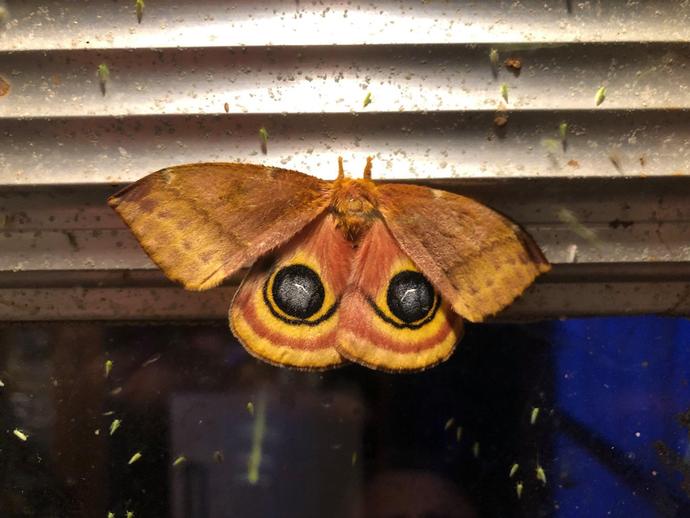
When its wings are folded ...
July 14, 2020
When its wings are folded, the Io moth (Automeris io) probably wouldn't warrant a second glance; however, when its wings are extended to reveal the huge predator-deterring eyespots on its hindwings, it definitely leaves an impression! These beautiful moths belong to the family Saturniidae, and they can be found throughout the east coast and into the midwest. We looked at another moth from this family back in early June: Callosamia angulifera, the tulip tree silkmoth. Like all members of the family Saturniidae, adult Io moths do not eat and don't even have working mouthparts. The caterpillars, on the other hand, eat the foliage of a wide variety of plants. As the caterpillars grow older, they turn from orange to neon ...
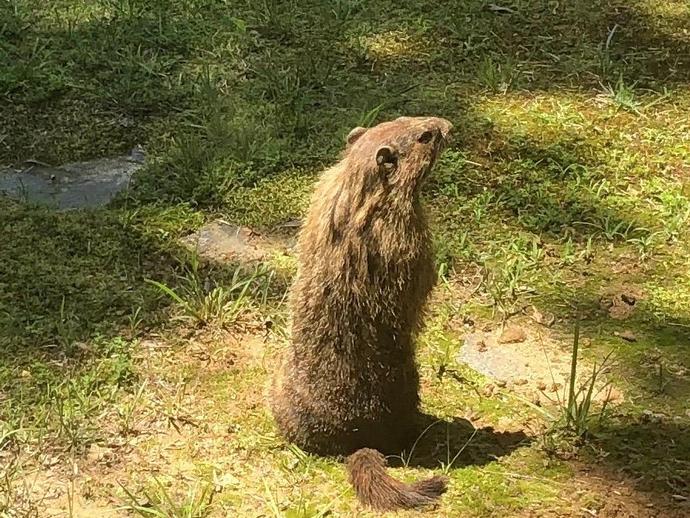
This critter is Marmota monax ...
July 13, 2020
This critter is Marmota monax, but it goes by many common names, including groundhog, woodchuck, and whistlepig. My grandpa was always partial to that last one; as he explained it, when you see a groundhog and whistle at it, it will sit up on its hind legs ("And that's when you shoot it," he would add; he wasn't a big fan of groundhogs). There is some truth to that; if a groundhog is startled, it will rear back on its hindlegs, stand motionless for a moment, and then whistle to alert other groundhogs of potential danger! Groundhogs can be found throughout much of the eastern U.S., and their range extends into the midwest and up through most of Canada. They like to live in pastures and at the edge of woodlands, which ...
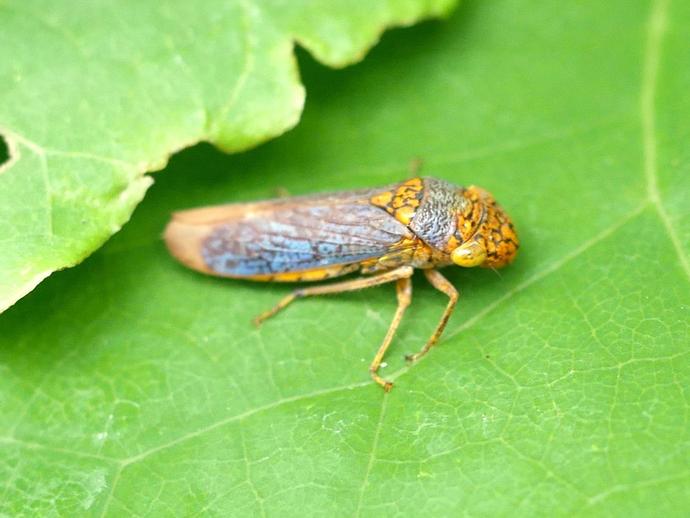
This little guy is Oncometopia orbona ...
July 12, 2020
This little guy is Oncometopia orbona, which goes by one of my favorite common names of all time: the broad-headed sharpshooter! I think Lee Van Cleef was called that in a western once... The broad-headed sharpshooter is a type of leafhopper belonging to the family Cicadellidae. These insects use tiny piercing mouthparts to suck the juices from plants. They also have modified hind legs that allow them to jump with incredible speed and distance (comparatively speaking). In fact, the nymphs of one species of leafhopper -- Issus coleoptratus -- have a fascinating innovation that allows them to jump with incredible precision. These leafhoppers jump so fast that in order to jump in a straight line and land where they want to ...
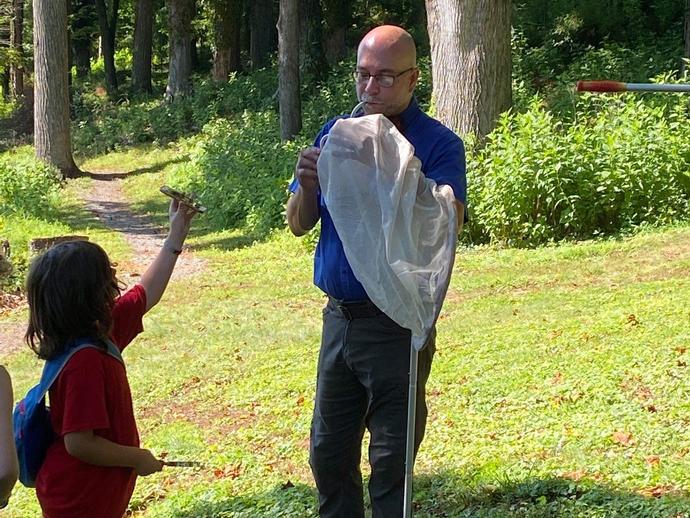
VMNH Executive Director Dr
July 11, 2020
VMNH Executive Director Dr. Joe Keiper hosted a zoology walk around Lake Lanier in Martinsville this morning for a handful of participants! Dr. Keiper and participants were on the lookout for birds, insects, fish, turtles, snakes, and other animals during the outing.
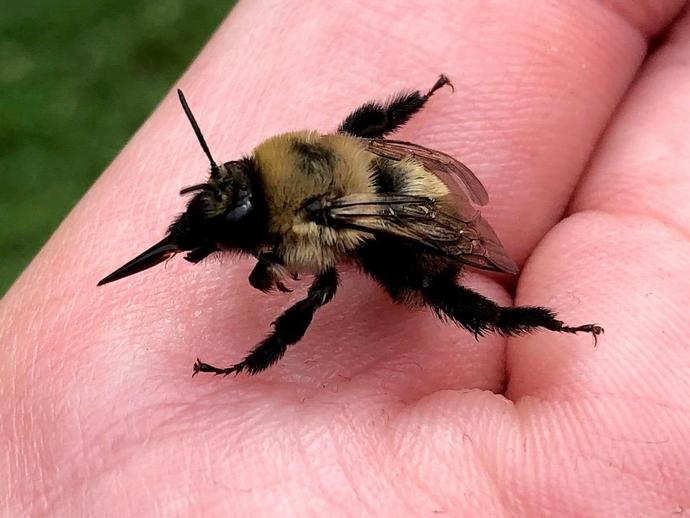
Have you ever seen a bumblebee stick out its tongue? You have now!
July 11, 2020
Have you ever seen a bumblebee stick out its tongue? You have now! According to VMNH Associate Curator of Invertebrate Zoology Dr. Kal Ivanov, this bumblebee is most likely Bombus impatiens, the common eastern bumblebee (any uncertainty is the result of my photography, not Dr. Ivanov's expertise). These bumblebees can be found in temperate forests in the eastern U.S., southern Canada, and the eastern portion of the Great Plains. They're highly adaptable and they're a crucially important pollinator species. Many commercial farms buy huge numbers of bumblebee hives to pollinate their crops, and private citizens can even buy bumblebee hives to pollinate their gardens! The common eastern bumblebee lives in nests that are ...
Even though VMNH is currently unable to host education programs at the museum this summer ...
July 10, 2020
Even though VMNH is currently unable to host education programs at the museum this summer, we can still bring VMNH education programs to you! The museum's education team has created 5 separate Summer Discovery Kits that explore a variety of topics, from paleontology to food webs to life cycles! Watch this video and visit www.vmnh.net/education-kits to learn more!
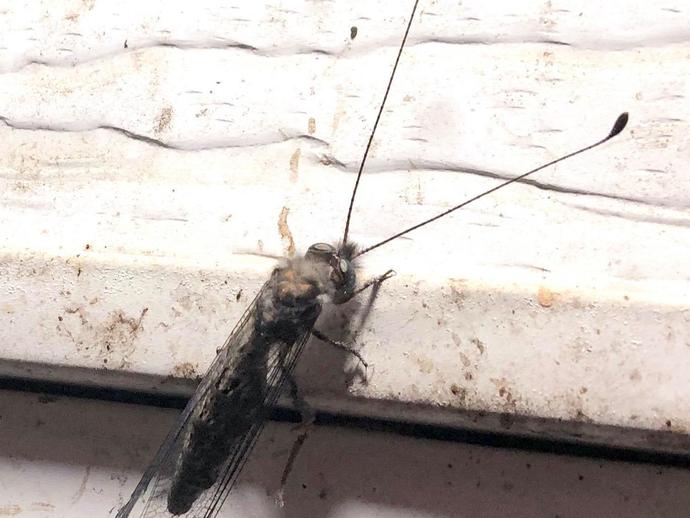
Over the last couple of days, we've looked at two aerial predators that hunt by day
July 10, 2020
Over the last couple of days, we've looked at two aerial predators that hunt by day. Let's close out the week by looking at an aerial predator that hunts in the evening: Ululodes quadripunctatus, the four-spotted owlfly. While some owlflies are diurnal, meaning they hunt during the day, this species hunts at twilight. As you can see, owlflies are unusual insects, sort of resembling a cross between a dragonfly and a butterfly. They have long, clubbed antennae, bulging eyes, and they often rest on plants with their abdomens sticking straight out in order to camouflage themselves as twigs! Owlflies are not closely related to dragonflies; they belong to the order Neuroptera, which means they're actually more closely ...
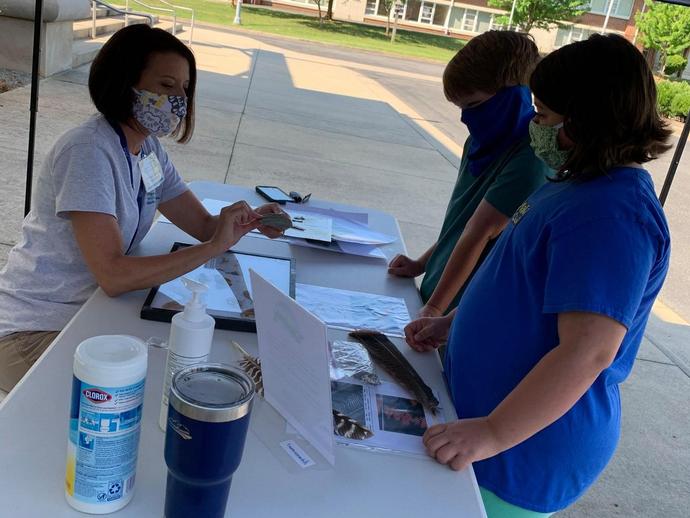
Museum Education Manager Christy Deatherage is outside of the museum today from 10 a
July 10, 2020
Museum Education Manager Christy Deatherage is outside of the museum today from 10 a.m. to noon hosting a special display of museum specimens for visitors to view! The display is offered in conjunction with a "Summer Pop-up Camp" being hosted by The Institute for Advanced Learning and Research (IALR) within the museum's parking lot. The pop-up camp is also available from 10 to noon today.
In this episode of "Tales of Ancient Life", Assistant Curator of Paleontology Dr
July 9, 2020
In this episode of "Tales of Ancient Life", Assistant Curator of Paleontology Dr. Adam Prtichard shows off specimens from the VMNH scientific collections to highlight several dinosaurs that lived over 200 million years ago during the Triassic period.
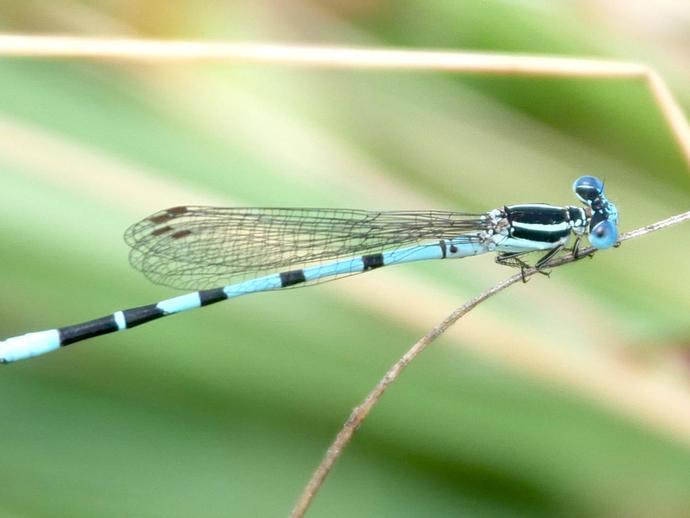
Yesterday we looked at a dragonfly, which is a member of the order Odonata
July 9, 2020
Yesterday we looked at a dragonfly, which is a member of the order Odonata. Today we're looking at the other heavy hitter from that same order: the damselfly. This damselfly is Argia bipunctulata, also known as the "seepage dancer." Like the dragonfly we looked at yesterday, this damselfly is associated with seeps, which are spots where groundwater seeps up to the surface from an underground aquifer. Damselflies are superficially similar to dragonflies, but there are a few key differences. For one, they're smaller and slimmer. One of the easiest differences to spot is that dragonflies generally hold their wings flat and away from their bodies, while damselflies tend to fold their wings along the length of their bodies ...
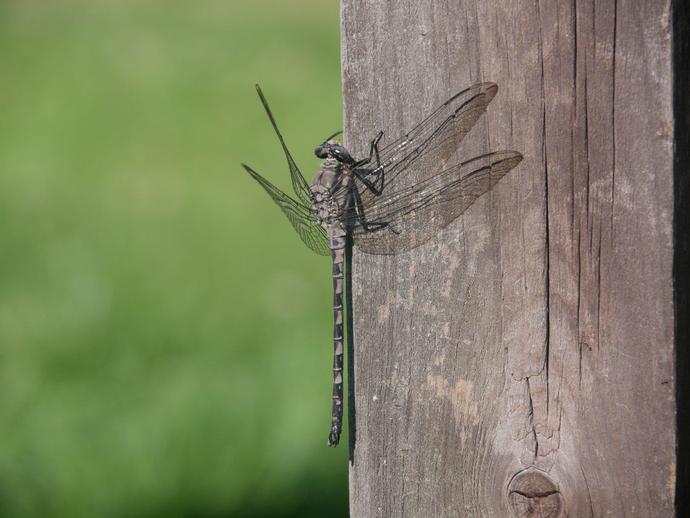
Yesterday ...
July 8, 2020
Yesterday, we looked at a rare butterfly listed on the DCR Atlas of Rare Butterflies, Skippers, Moths, Dragonflies, and Damselflies of Virginia. Today, let's look at another critter from that same atlas: Tachopteryx thoreyi, also known as the gray petaltail! This dragonfly isn't nearly as rare as the Diana fritillary we looked at yesterday -- it ranges from New York all the way down to Florida and as far west as Texas -- but it's uncommon because of its strict requirements. Most larval dragonflies spend their lives underwater preying on other insects (and even tadpoles and small fish), but the nymphs of this species of dragonfly require permanent seeps. A seep is a spot where groundwater seeps up from an underground ...
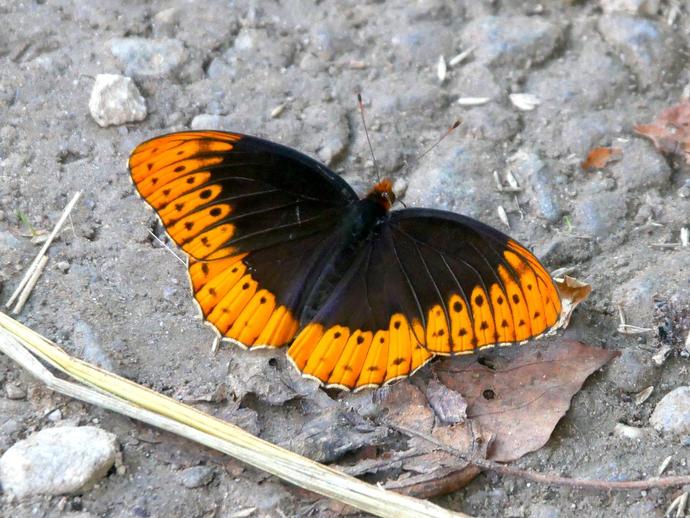
Last week I was out taking nature photographs (like I do) when I spotted an unusual-looking ...
July 7, 2020
Last week I was out taking nature photographs (like I do) when I spotted an unusual-looking butterfly that I couldn't recall ever seeing before. I snapped some pictures and didn't think too much of it until yesterday, when I decided to try and identify it. I soon learned that I'd spotted one of Virginia's rare and highly sought after butterflies: the Diana fritillary (Speyeria diana). No kidding; it's listed on the Virginia Department of Conservation and Recreation's Atlas of Rare Butterflies, Skippers, Moths, Dragonflies and Damselflies (https://www.vararespecies.org/list), and according to that website, it hasn't been spotted in Patrick County since prior to 1950! The Diana fritillary is strongly sexually dimorphic, ...

The Institute for Advanced Learning and Research (IALR) is hosting a "Summer Pop-up Camp" within ...
July 7, 2020
The Institute for Advanced Learning and Research (IALR) is hosting a "Summer Pop-up Camp" within the museum's parking lot on Friday, July 10 from 10 a.m. to noon! During this event, students will be given a foldable microscope (Foldscope) along with materials to make slides and instructions on how to fold their microscope, ideas on what they can investigate and where they can share their discoveries. Museum staff will also share a display of specimens. For more information, please visit www.ialr.org/stem-camps/.

With its bright red horn-shaped flowers, trumpet vine (Campsis radicans) is easy to spot
July 6, 2020
With its bright red horn-shaped flowers, trumpet vine (Campsis radicans) is easy to spot. This showy vine is native to the eastern U.S., but it has also been naturalized in the western part of the country. Trumpet vine is popular with gardeners since it's easy to grow and attracts hummingbirds. It doesn't need a great deal of water or particularly fertile soil to thrive, and it will send out dozens of tendrils that grab onto any available surface, making it easy to shape. Of course, if you're a regular reader of these nature updates, you probably already see the downside coming: if something is easy to grow, it's also hard to kill, and trumpet vine can quickly overwhelm and strangle the other plants in your garden. If ...
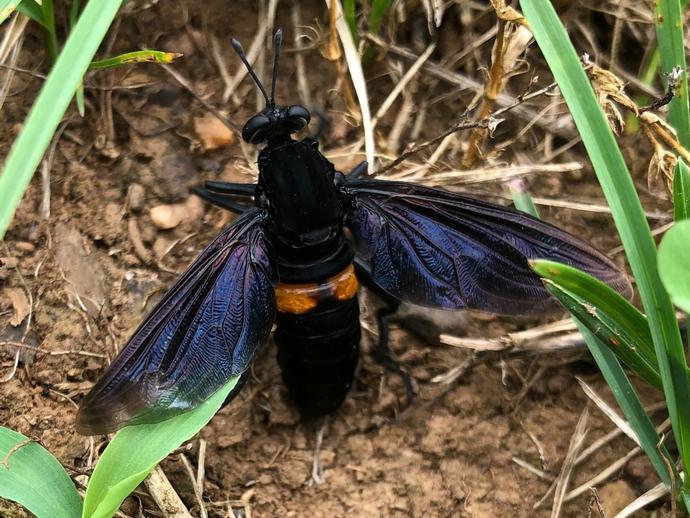
At first glance, this insect looks like a wasp, but it's actually a fly!
July 5, 2020
At first glance, this insect looks like a wasp, but it's actually a fly! This is Mydas clavatus, the clubbed Mydas fly. Mydas flies are a comparatively small family; there are 471 described species worldwide. They're generally large in size, and the family even contains the largest fly known to man: Gauromydas heros, a South American species with a four-inch wingspan! Despite their size and intimidating appearance, Mydas flies are perfectly harmless. While this species has evolved to resemble a spider wasp -- and will even jab its abdomen in an imitation of stinging -- it doesn't have a stinger, and it also can't bite. The larvae of these flies feed on beetle larvae, while the adults only feed on pollen and flower ...
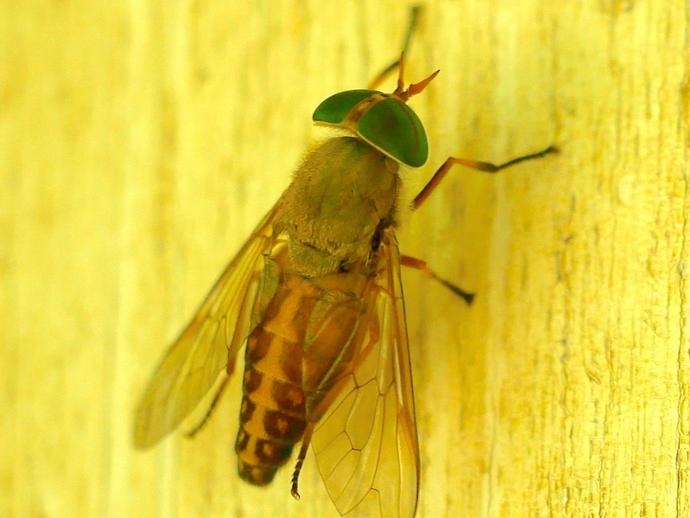
Happy July 4th!
July 4, 2020
Happy July 4th! There's a good chance that a lot of folks out there are going to spend today gathering with (a hopefully very small and safely-distanced group of) friends, grilling some delicious meats, shooting off fireworks, and maybe even taking a dip in a pool. And if you do that last one, you might encounter today's highlight, the horse-fly! This particular horse-fly is Tabanus fulvulus. Horse-flies have been recognized in literature since the Ancient Greek playwright Aeschylus wrote that they drove people to madness. Mankind's opinion of the horse-fly has not much improved in the intervening 2,500-odd years. Horse-flies are found all over the world, and some species are actually important pollinators. Both males ...
Archives
2025
2024
2023
2022
2021
2020
2019
2018
2017
2016
2015
2014
2013
2012
2011
2010
2009
2008

Please Visit Us Soon
Hours:
Tuesday - Saturday: 10am - 4pm
Sunday: Noon to 4pm (Memorial Day Weekend through Labor Day Weekend only)
Monday: Closed
Admission:
$12 for ages 18-59
$6 for ages 3-17, seniors 60+, and college students
FREE for children under 3, museum members, members of ASTC Passport participating institutions, and EBT cardholders
My 4 year old son loves going to the museum. The exhibits are educational, interactive and kid-friendly.
”

 Hours & Admissions
Hours & Admissions Directions
Directions